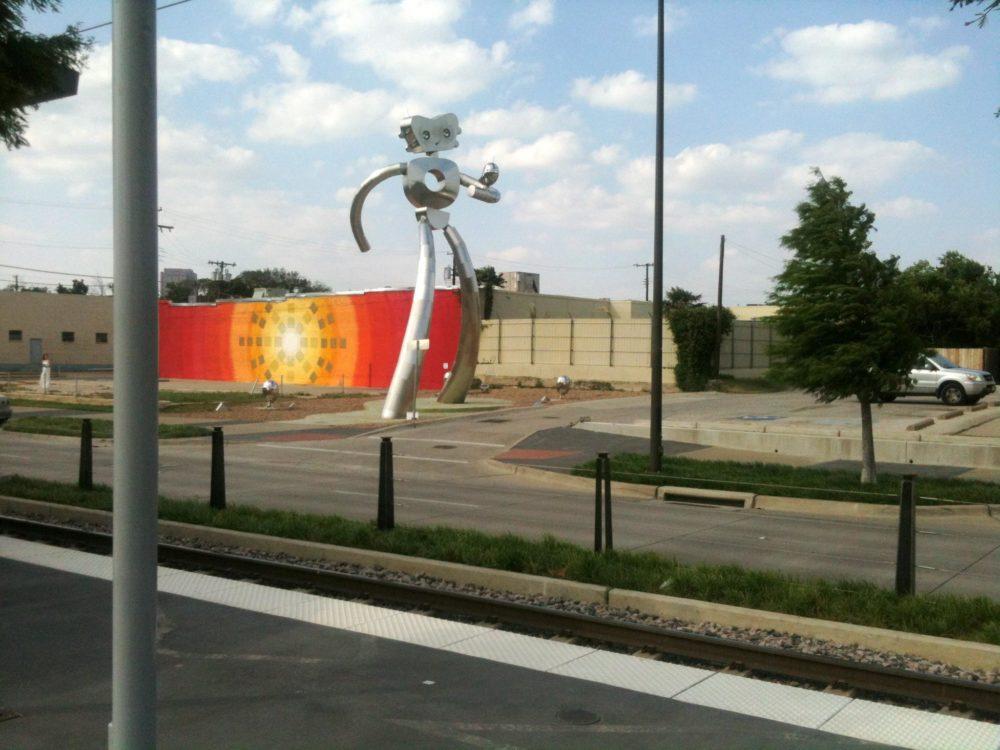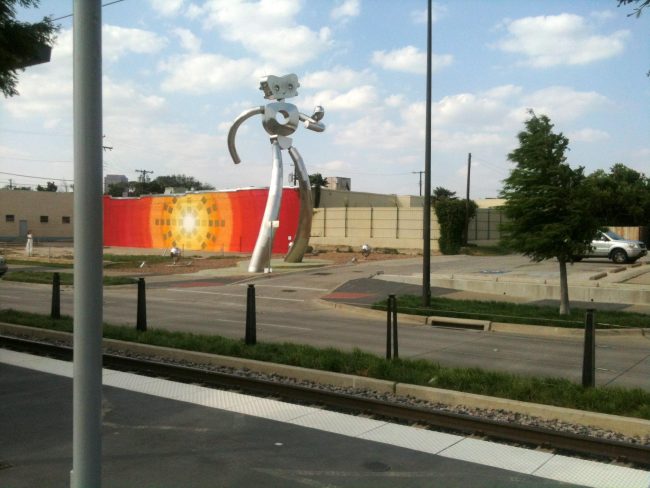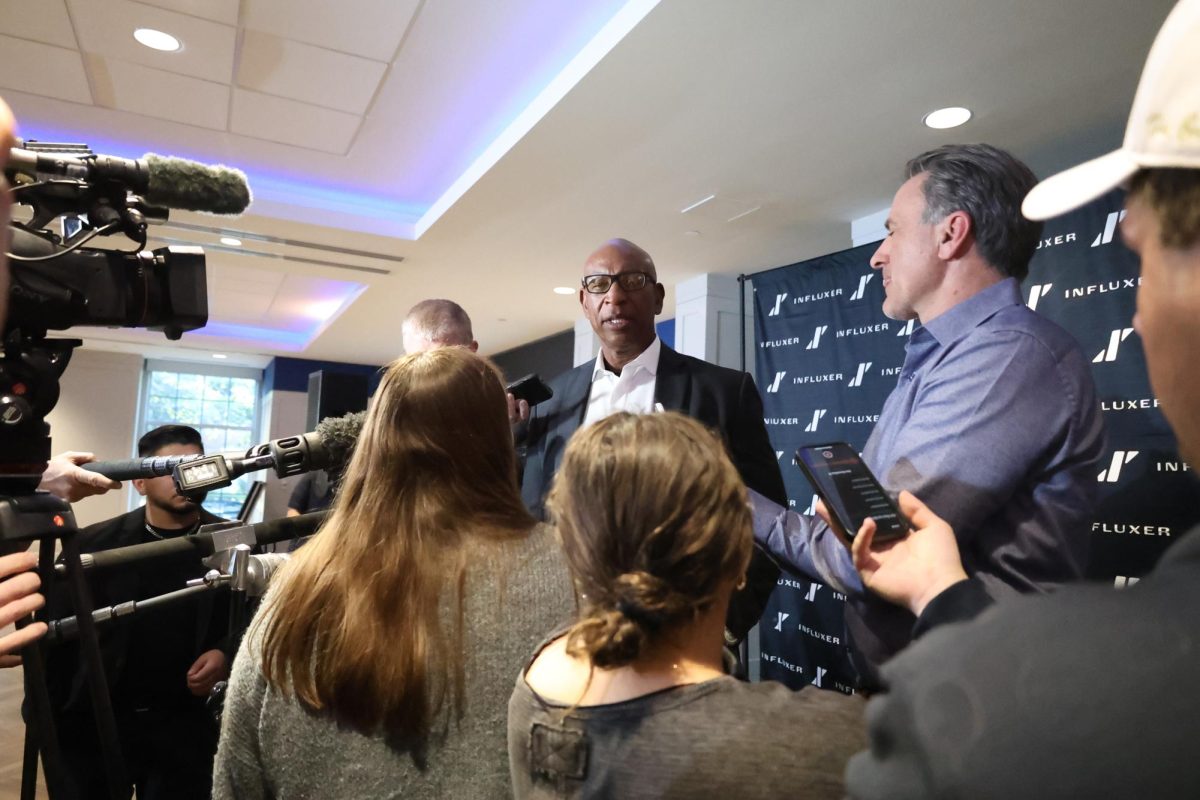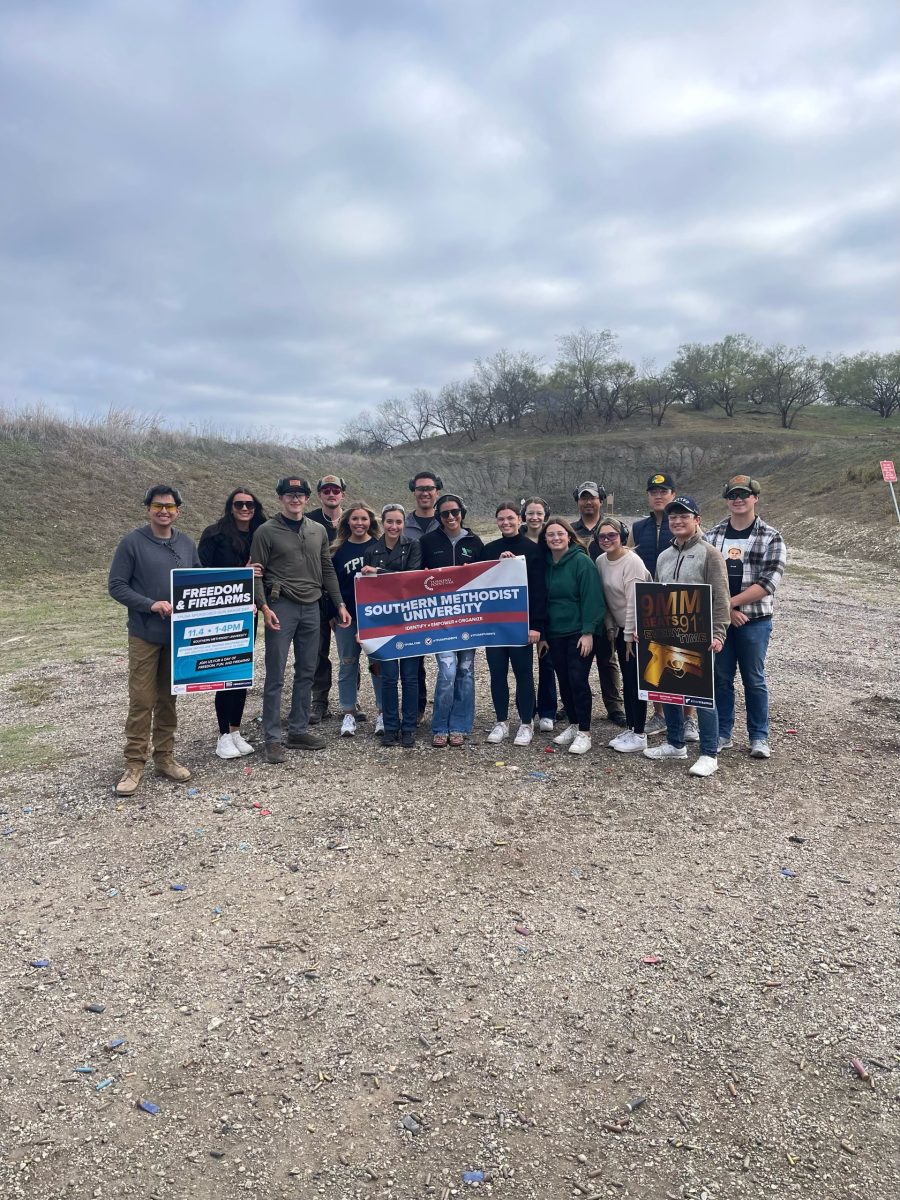
One of the Traveling Men sculptures in Deep Ellum.
I climb the blue, green and red steps to the top of the platform at DART’s North Carrollton/Frankford Station. On this Tuesday afternoon, a bit before 3 p.m., I was joined only by a piece of abstract art and one person sitting on a bench, moving to the music playing on his iPod. Behind me the parking lot was full.
I heard the train before I saw it. The yellow and white train pulled up to the platform and the entire load of passengers exited. This is the northernmost stop on the Green Line, just east of I-35 and north of the President George Bush Turnpike.
The Dallas Area Rapid Transport’s Green Line is a 28-mile stretch of tracks that connects Carrollton to southeast Dallas. The $1.8 billion Green Line is the most recent rail line to be completed, with the last of the 24 stations serving it opening in late 2010. More than year after the Green Line was complete, overall DART rail ridership is up by nearly 4.5 million, to more than 22 million riders. DART Media Specialist Mark Ball attributed the jump in ridership to the Green Line.
“Our ridership increase was because people with jobs gave our new Green Line a try and stayed using it for travel to and from employment,” Ball said.
As the train departed the North Carrollton station, I found myself with 10 other people in the train car. Through the first six stops, from Carrollton to the stop at Love Field, the surroundings don’t change much. There is a constant changing of passengers and the train travels down mostly elevated tracks, only a stone’s throw away from Interstate 35. The view of the Dallas skyline grows larger in the distance.
The train moves out of the Inwood/Love Field, heading through north Dallas. The roads here are dominated with SUVs, many with kids in the backseats, unfazed by the passing, fast-moving train. At the Southwestern Medical District/ Parkland Station, near the intersection of Medical District Dr. and Harry Hines, the familiar light of a welding torch can be seen inside a huge concrete and metal structure under construction. This is the new site of Parkland Hospital, to open in 2014.
The tree-lined station at Market Center is next, but this is the end of a lot of green along the line. Instead, the train will travel into areas gray with concrete. The train pulls up to an almost empty Victory Station a few minutes later. The station adjoins American Airlines Center, which is not holding any events tonight. The train veers to the left and begins the next leg of the journey: through the four stations located in downtown Dallas.
These four stations are unique in that all three DART train lines – Red, Green and Blue – stop there. The shadows of skyscrapers fall over the train as we travel through the area. A mix of men and women, some in business suits, some in hardhats, and one scantily clad woman, fill the train. Many people stand now, as the train darts from station to station, a constant flow of people getting on and off. We travel through the West End Station, the Akard Station and the St. Paul Station, a sequence that takes just six minutes.
The last downtown station is at Pearl. Street. This is where the Green Line begins and ends each day for Wendy Enriquez, a surgical scheduler at Baylor University Medical Center. After taking the Red Line down from Richardson, Enriquez uses the Green Line to finish her trek to work. She has used the DART since she started working at Baylor in August.
“It makes the commute better,” Enriquez said.
The train crosses under Highway 75 before making its next stop at the Deep Ellum station. The Traveling Man sculptures by artists Brad Oldham and Brandon Oldenburg overlook the station. The metal sculptures look as though they were built from the very tracks I am on.
The next stop is at Baylor University Medical Center. Justin Leatherman is quite familiar with this stop, as he works security around the hospital and takes the Green Line to work. With the average price of gas above $3.80 a gallon, Leatherman knew that driving his truck from The Colony everyday wasn’t in his best economic interest.
“It’s just more efficient in today’s economy,” Leatherman said.
As the train crossed in front of the empty fair grounds at the Fair Park Station, the scenery begins to change. Chain link fences, some with barbed wire around the top, surround many of the business here. Graffiti becomes more prevalent. Bars appear on the windows of homes.
The DART continues through four more stops: MLK Jr. Station, the Hatcher Station, the Lawnview Station and the Lake June Station. The tracks are no longer elevated, and at one point the train cuts through a residential neighborhood. Only a chain link fence separates the tracks from the homes on either side. Children wave as the train passes. Some young boys even attempt to run along side the train on the other side of the fence. Many of the people getting on ride for only one stop. Gone are many of the briefcases that accompanied people at the downtown stops. In their place are grocery bags.
The train arrives at its last stop, Buckner Station. The ride has been one hour and 15 minutes. This is where Cynthia Perea’s day ends. Perea works downtown, and rides the train everyday. She’s been a rider for years, even before the Green Line was extended all the way here.
Perea usually feels safe riding the train, but says there was a month-long period when she was not as comfortable on DART. One day, she said, a young man approached her at one of the stations and asked if he could borrow her phone to make a quick phone call. As soon as the phone was in his hands he ran away with it. Though police caught him and returned the phone to Perea, she was frightened. In the end, however, the positives of DART outweighed any potential negative.
“DART is great for me. I love it. I rather ride the train then have to drive or park downtown,” Perea said.

American Airlines Center as seen from the DART Victory Station.

A view of the unfinished Parkland Hospital from the Southwestern Medical Center/Parkland Station.









